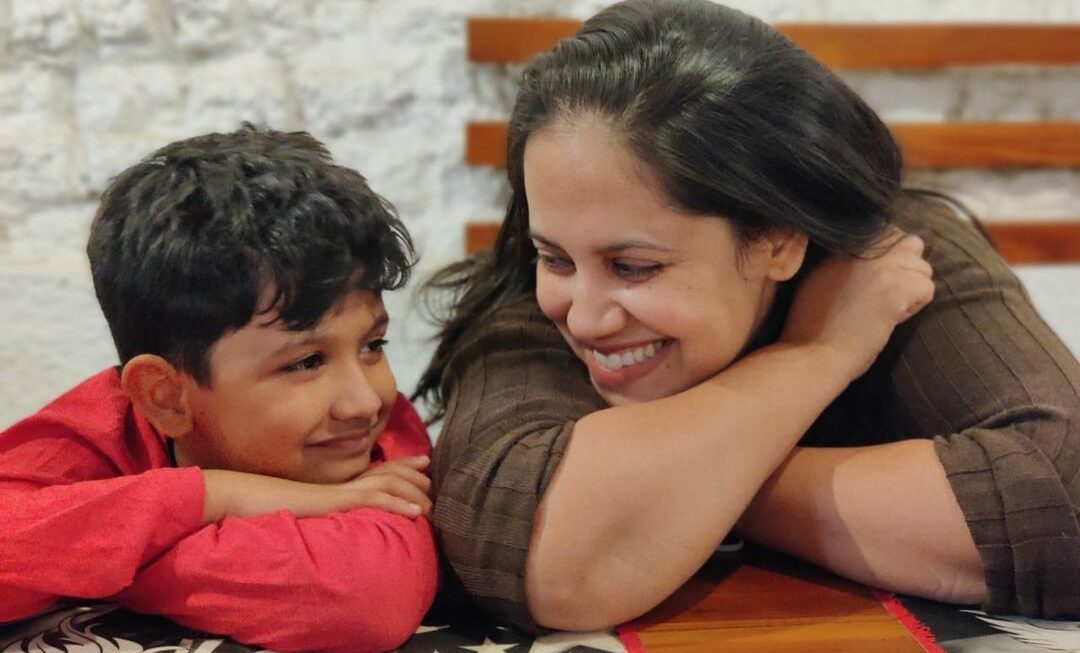Kids teach us about many things. We, however are always teaching them to say yes.I often find myself saying “No” to my child for things that I believe do him no good. Yet, there are times when I am surprised when I hear my child say “No”. We as parents are accustomed to giving orders to our children. Each of us expects our child to follow these orders like they were commandments in an army. We often find ourselves perplexed and sometime even hurt when our child says no to us for something. With a decade in a marriage and six plus years of motherhood, let me tell you that is extremely important to teach your child to say no. When I am teaching my child to say “no”, it definitely doesn’t mean defiance.Instead, it means I am trying to raise an independent and strong child!!

Here are some reasons why you should teach your child to say NO
- Helps them be aware of what they are comfortable with.
- It is a step toward keeping them safe from sexual harassment.
- They understand that being a people pleaser is not always necessary
- They also understand that their opinions and thoughts matter.
- When your child learns to say, No, they understand, that their voices and thoughts need to be expressed and heard!
- They feel involved and cared for. They feel respected too.
Saying No to your kids and hearing No for an answer, can always be a tricky thing to manage. This is something you need to practice tactfully. I seldom find myself at loggerheads with my little one because both of us have found an opportunity to say, NO to each other. In a tricky situation like this, communication is very important. I try and explain reasons, why a ‘No” is being said. The little man surely needs to see light about how saying yes and no to situation can affect him.
There are many simple ways in which you can teach your child to say no without teaching them about indiscipline. It is important to set boundaries and consistent limits for kids, it also important for them to learn to say NO.These ways give them a sense of liberation and a sense of belonging too!

How you show affection
As adults we often ask our kids to hug relatives, friends and acquaintances in order to exchange pleasantries. Bear in mind, these people could be as good as strangers to your kids. Talk to your kids and understand if they are comfortable doing so. If a child is expressing his or her discomfort being hugged, tickled or touched by someone you know, respect that. |Read how to show respect to your kid. Yes, signs of affection are considered symbol of love but when a child is uncomfortable with how it expressed, understand why.
Respect their thoughts about displaying affection.
The way we adults are some days okay about being hugged and some days we are not. Kids too feel that way. Talk to them and understand what they are OK with. Teach them to say no politely. Ask them to let the other person know they are not OK with exchanging physical pleasantries and they would rather prefer talking.For example, when my son doesn’t want to be hugged, he asks us not to do. If I have to hug him or kiss him, I ask him, if I can do that or not?

Sharing their pictures online.
We live in a world, where sharing pictures and almost everything about our lives has become a fad.I was reluctant to share my toddler’s pictures online and requested family and friends to refrain from doing so as well. Only when my toddler was older, did I begin sharing pictures and that too the ones that resonated with my blog posts. I would often ask him, if it was ok for me to share his picture online. This also teaches them about consent and respecting someone’s consent. It also a great way to teach them about the digital presence, the do’s and the don’ts too.

Ask them for decisions.
Involve kids in decision making. Ask them for their opinions. It could be something as simple as what meal to make or what activity should one do with them. When you give kids the power to call the shots sometimes, makes them believe in themselves. This helps them increase their self-confidence and teaches them that their voices matter. These small steps also set the stage for important conversations around self-love, body positivity and sexual education.

Their own intuition
We all have a gut feeling and we need to teach kids to follow their own intuition. Allow your kids to say no to activites, people, surrounding, if something makes them uncomfortable. Always, understand the reason for them saying no, helps you to have clearer conversations. Also while they are learning to say no, teach them about exploring options too.
We are not discussing points on how to raise a defiant kid, we are however teaching them to be respectful. Teaching them to say, NO, doesn’t mean they have a free hand, it simply means that they have a say in things too.

There will be times when your child would say, No to you unexpectedly and you would lose your cool. The best way to handle this is to avoid reacting immediately and ask them the reason for their NO. I often end up discussing my, Yes and No with my little man. We try and write down our reasons and see who has the maximum reasons. It is a fun game and also helps us discuss important matters.




Zqqhvz – Viagra approved buy viagra professional
help writing essays – http://boessay.com/ practice essay writing online
buy generic tadalafil online – http://xtadalafilp.com/ tadalafil online canadian pharmacy
before and after finasteride – http://propechl.com/ propecia and finasteride difference
finasteride propecia – propecia reviews propecia increased hair loss
tadalafil buy online – tadalafil online reviews canadian online pharmacy tadalafil